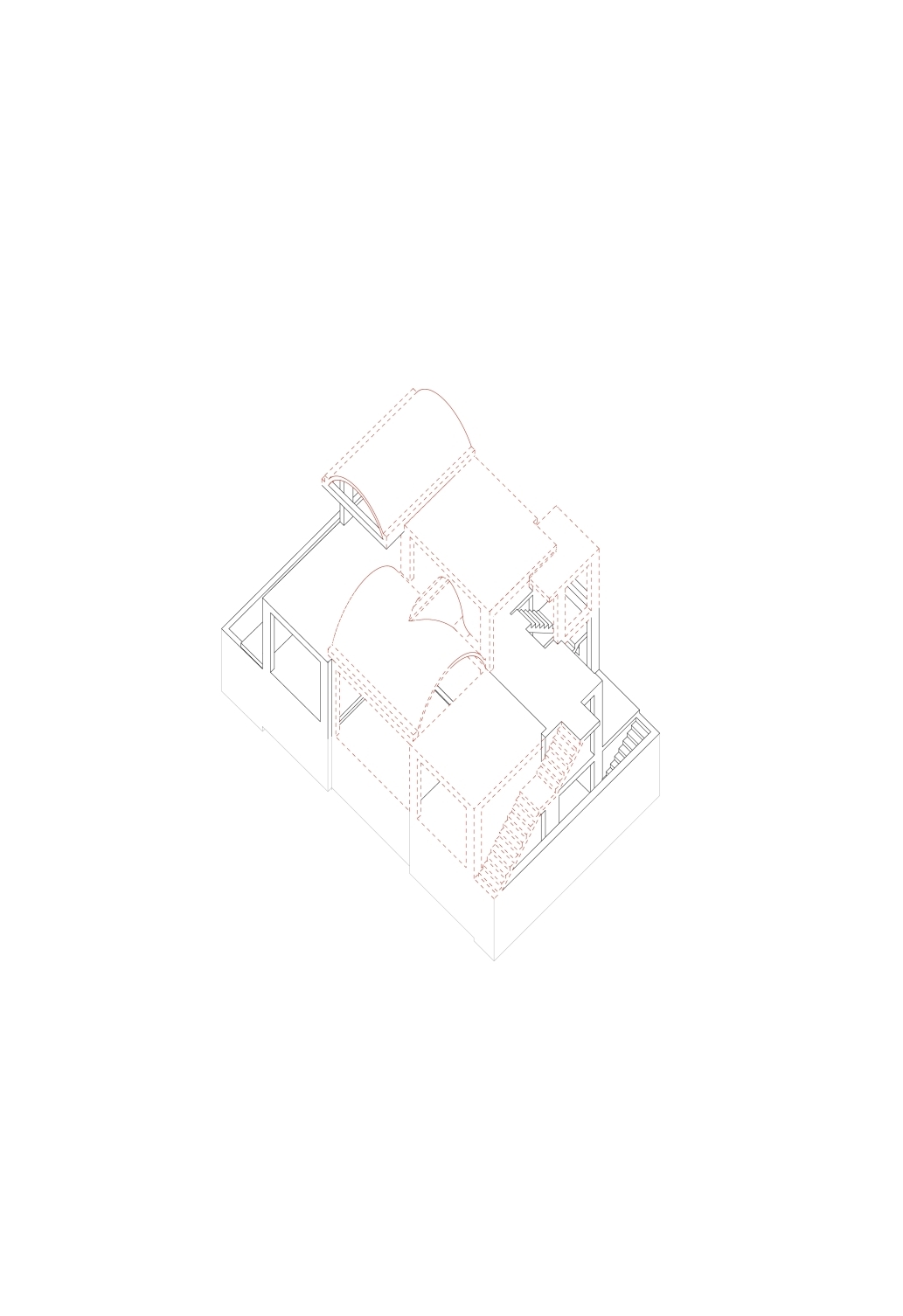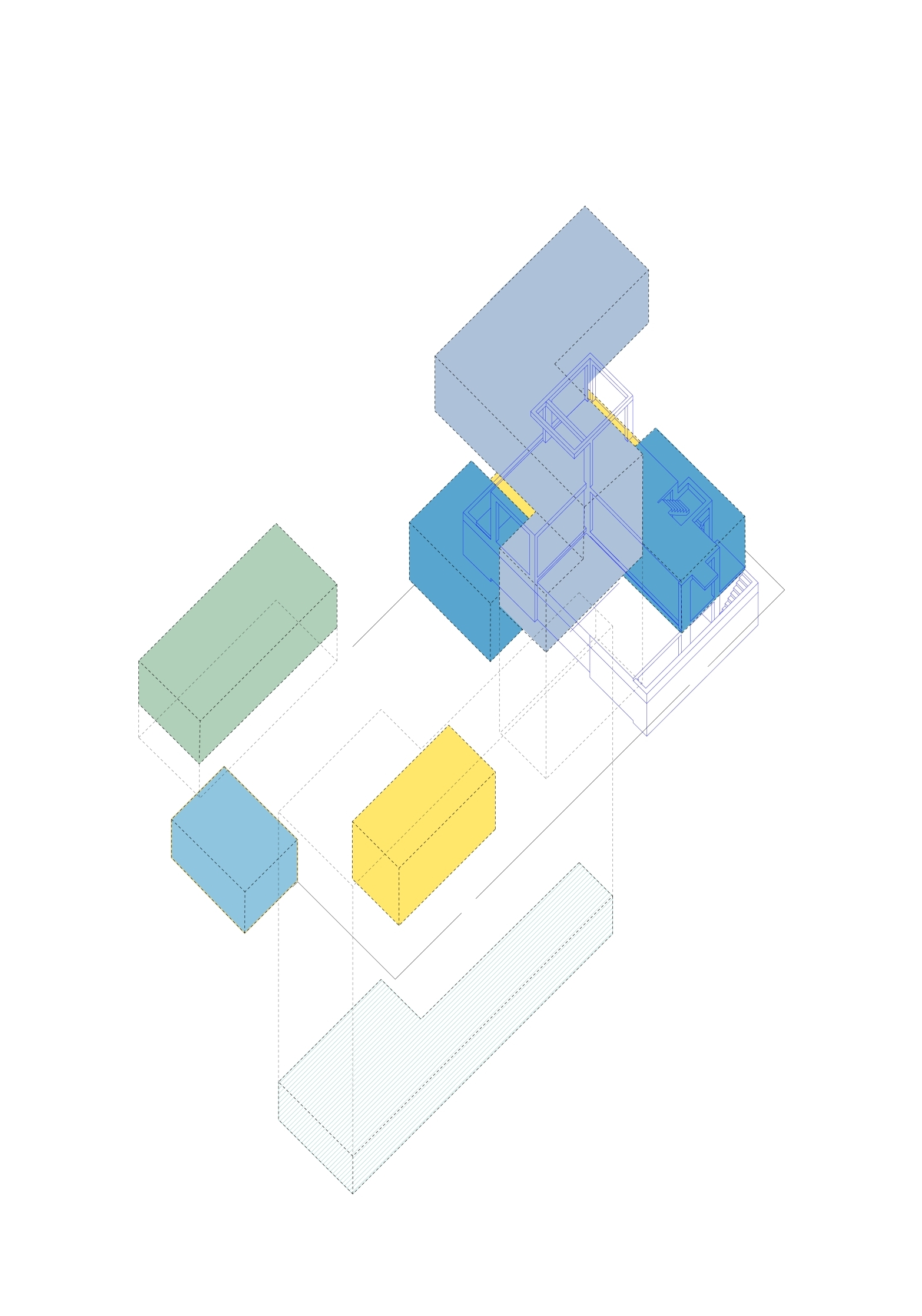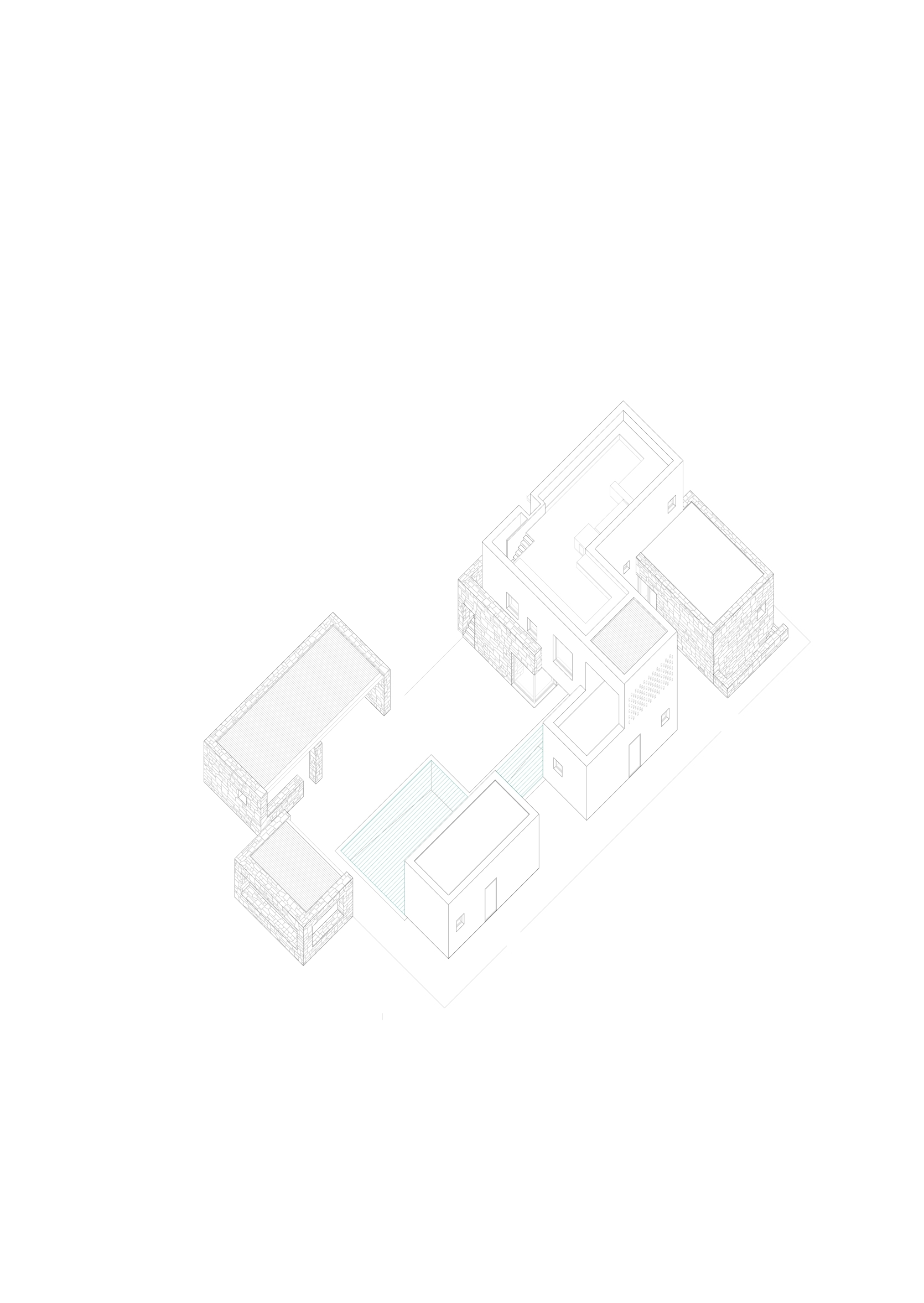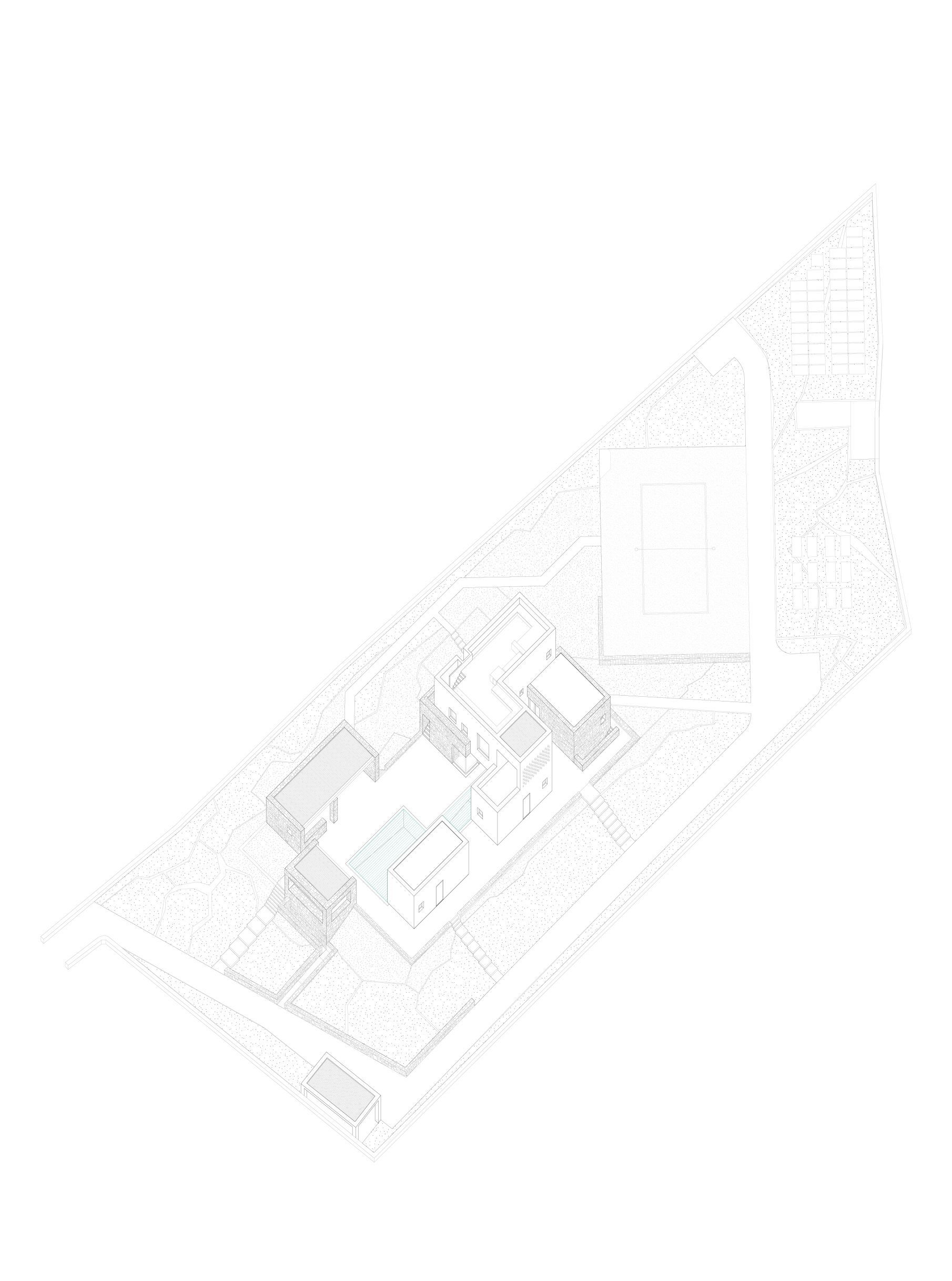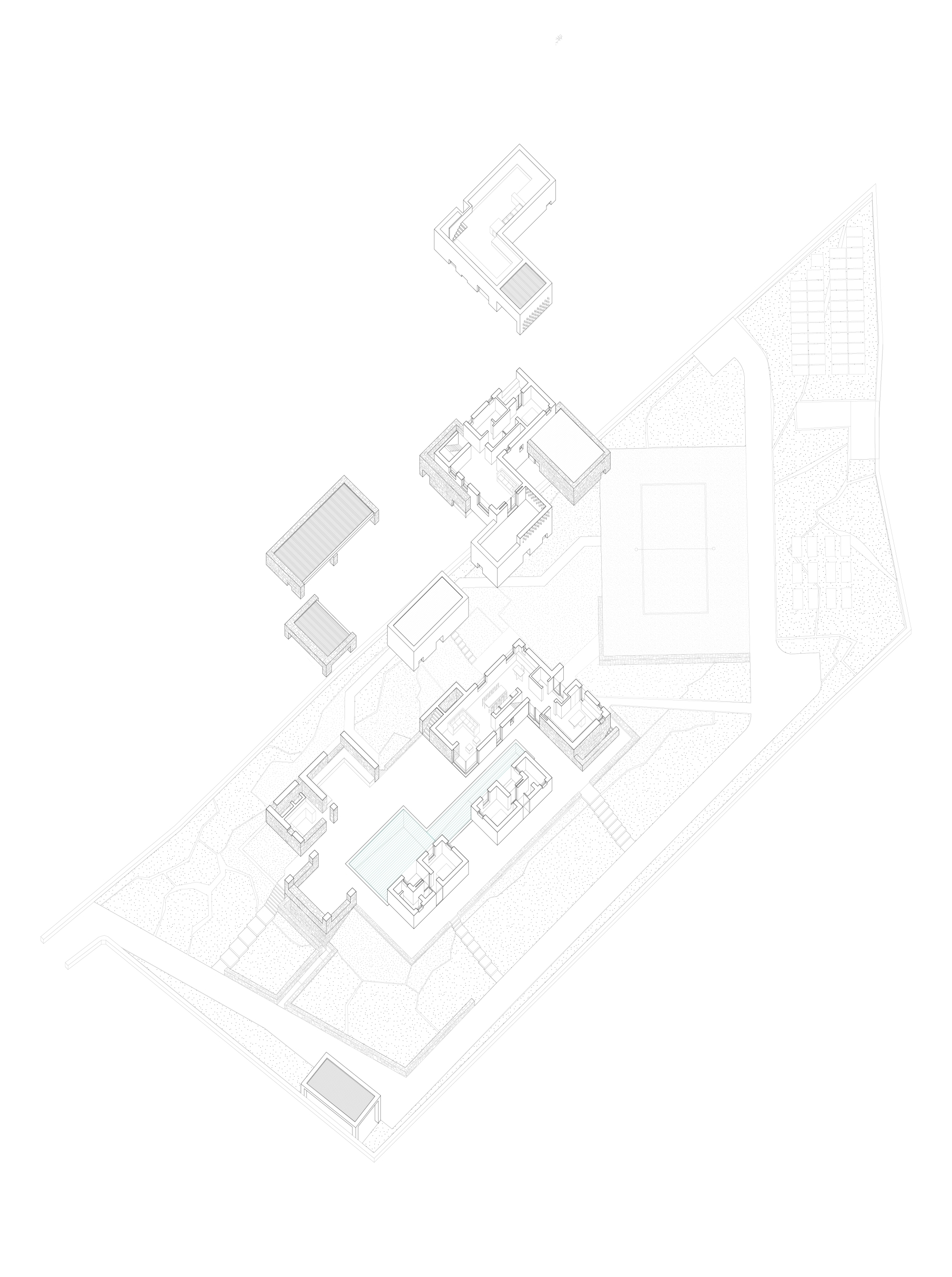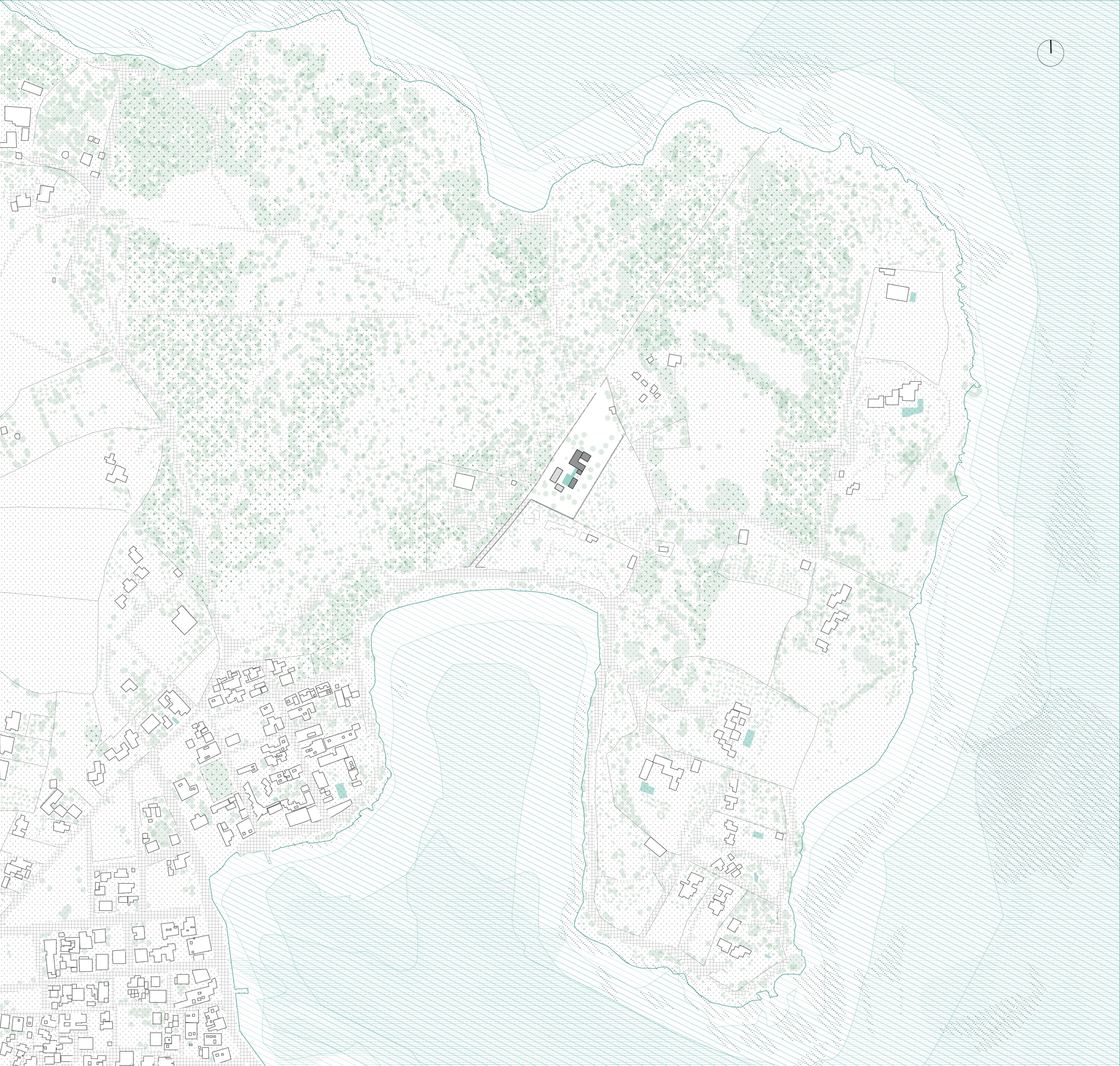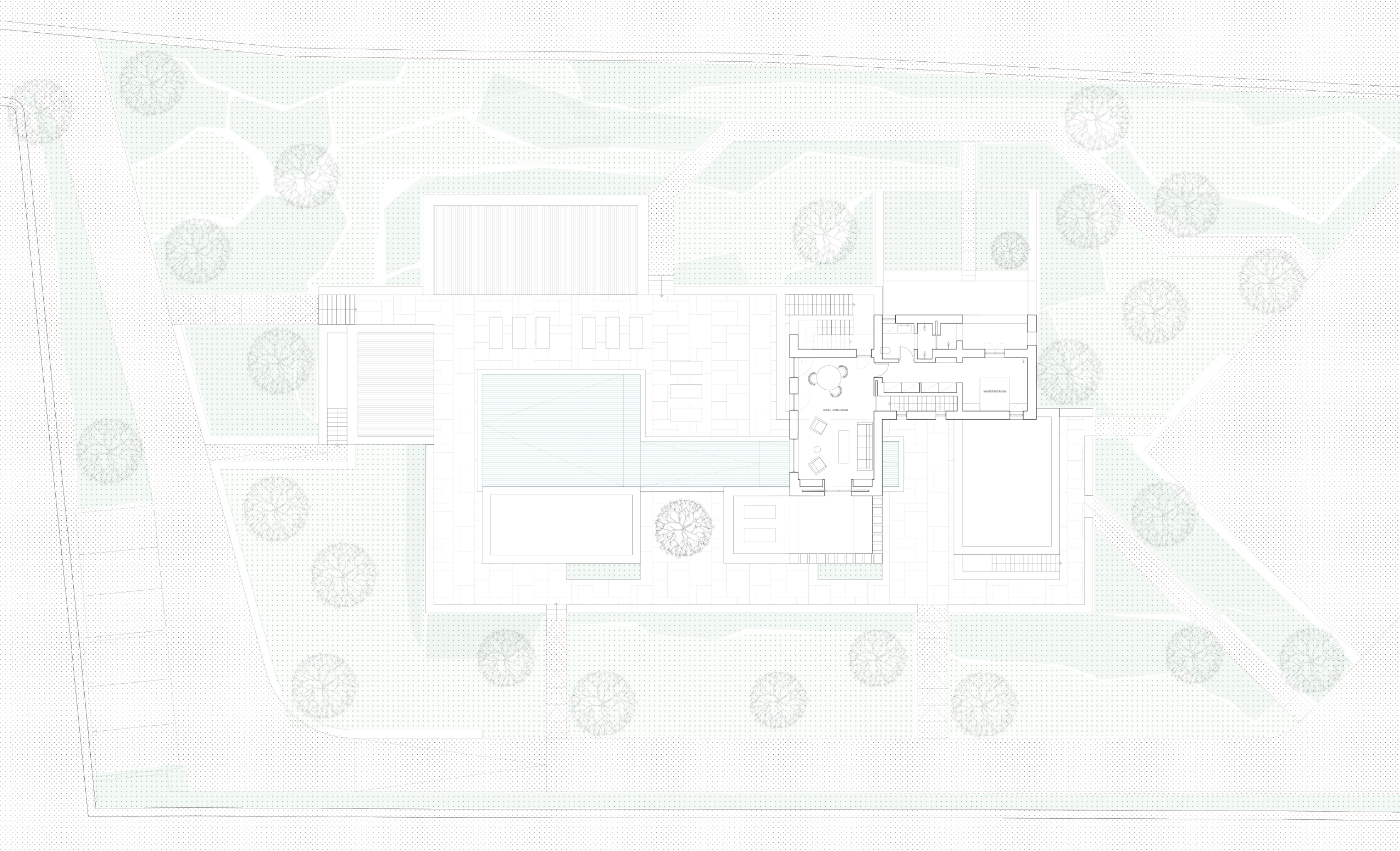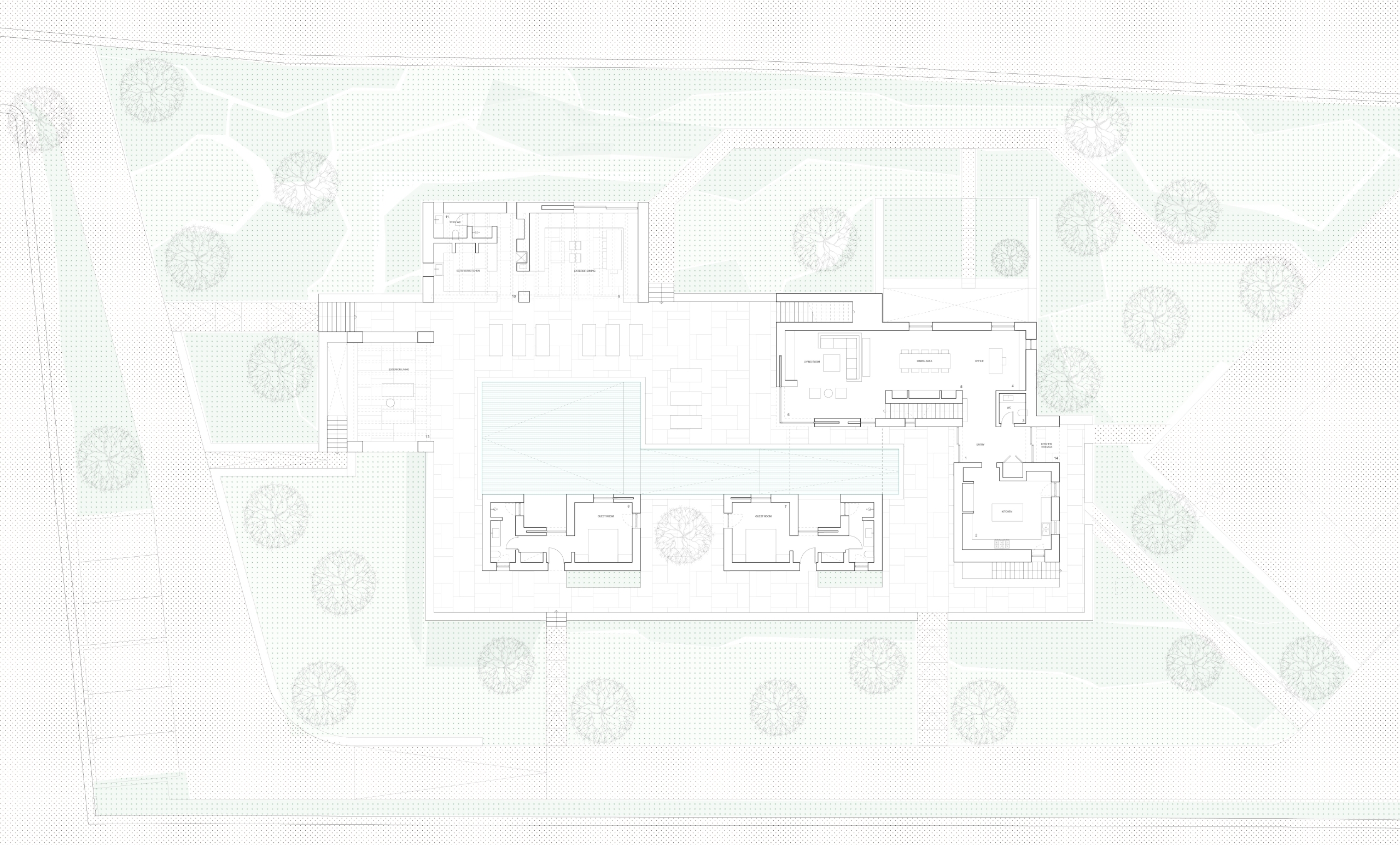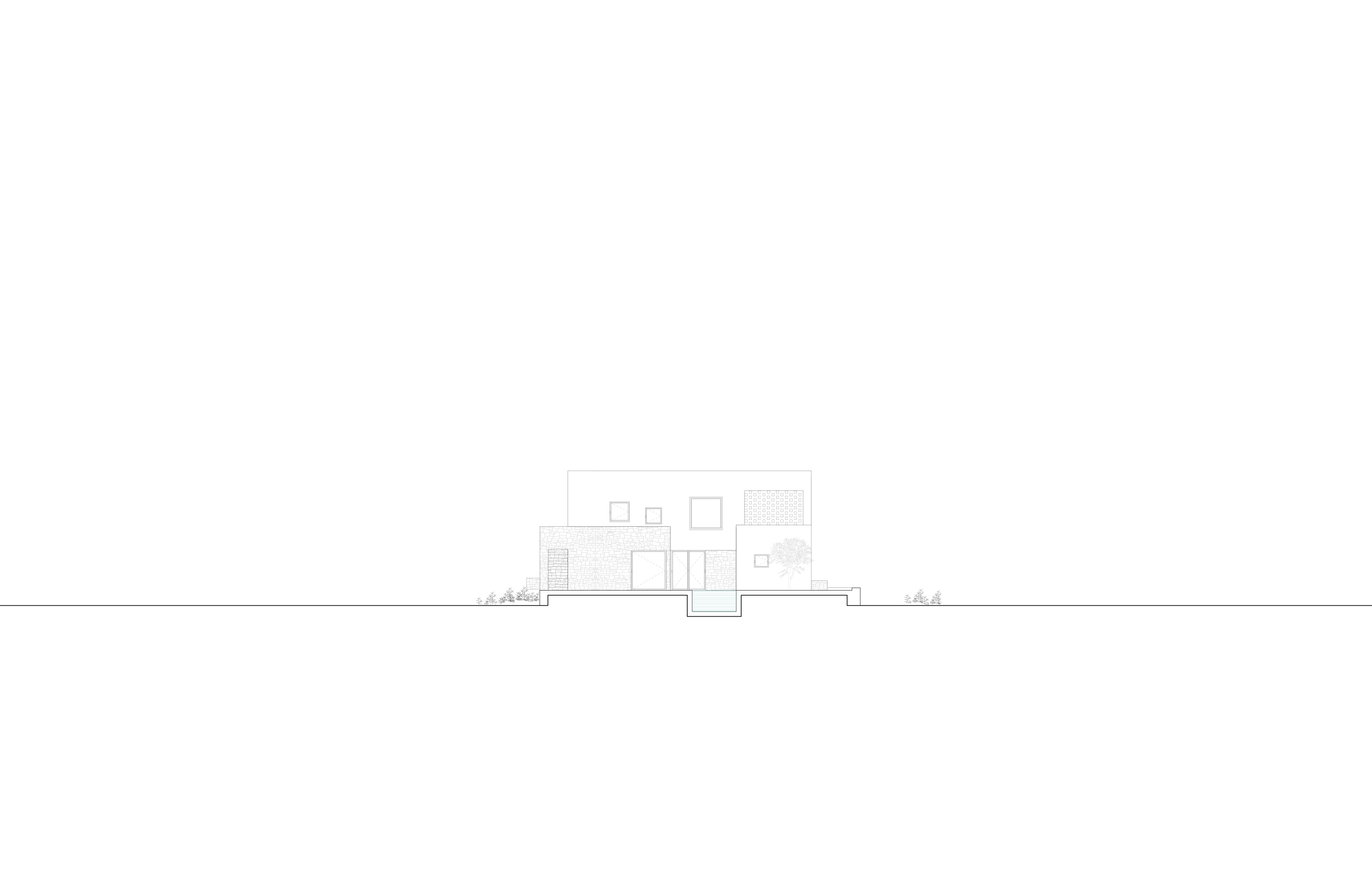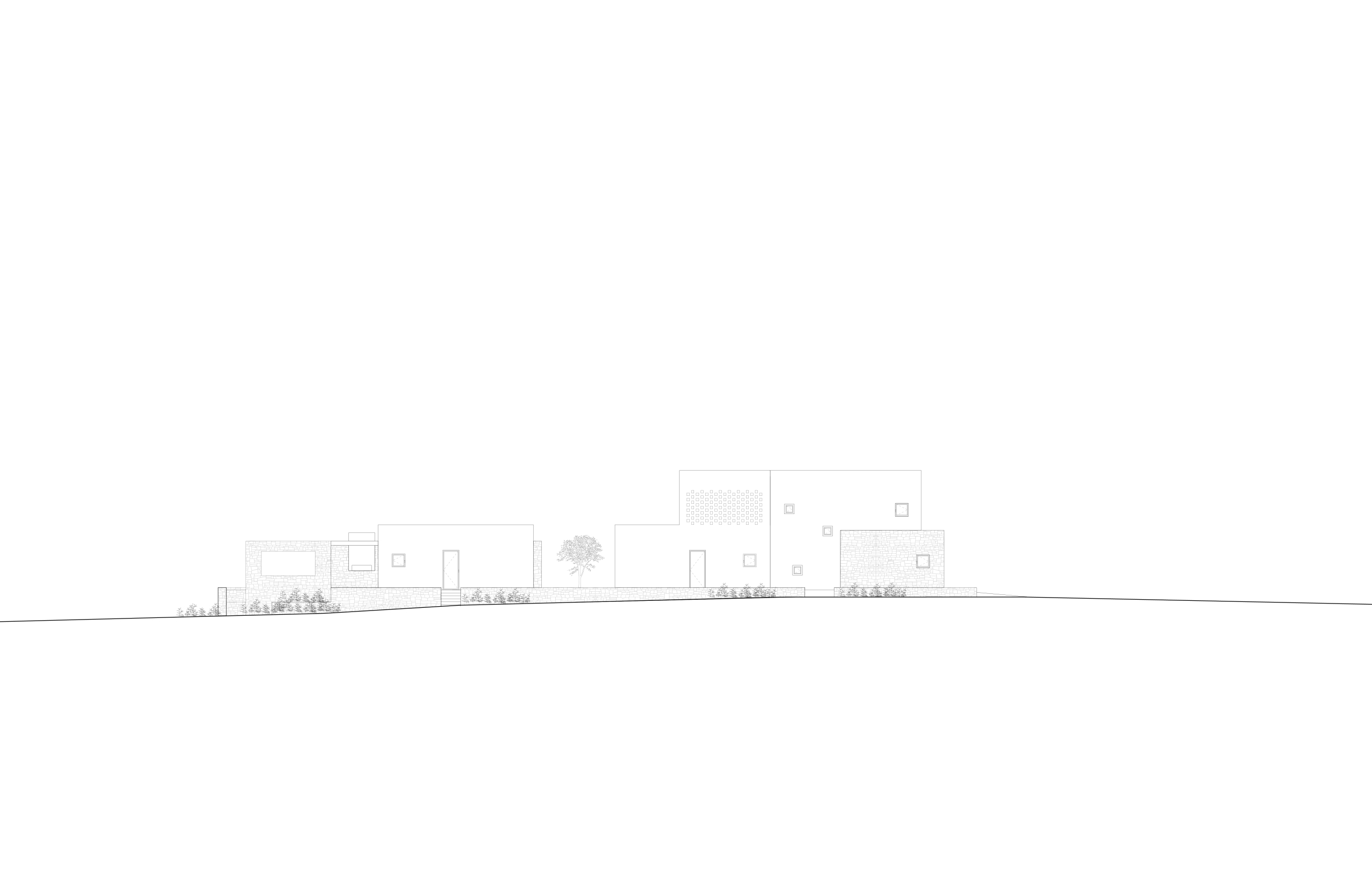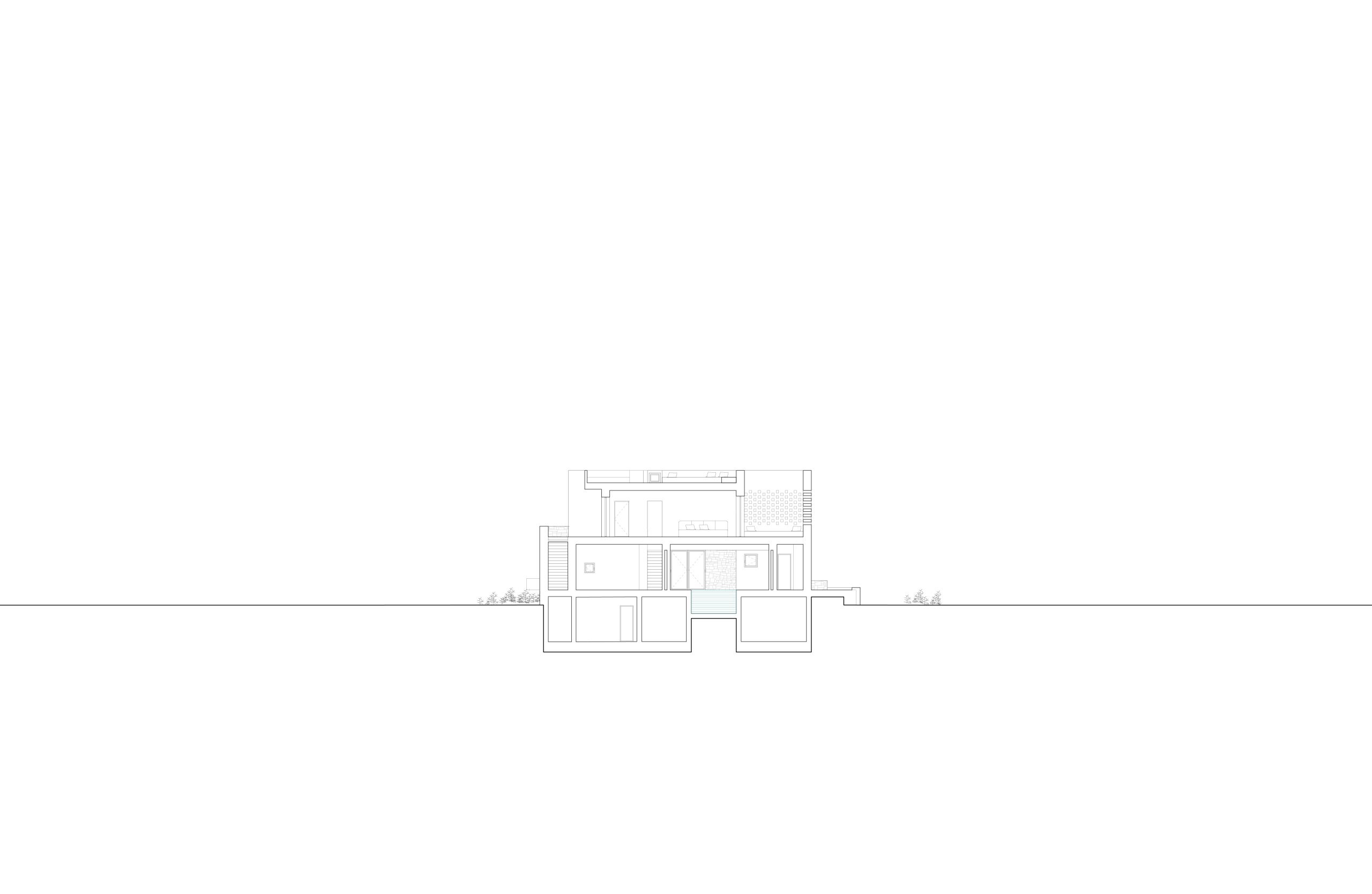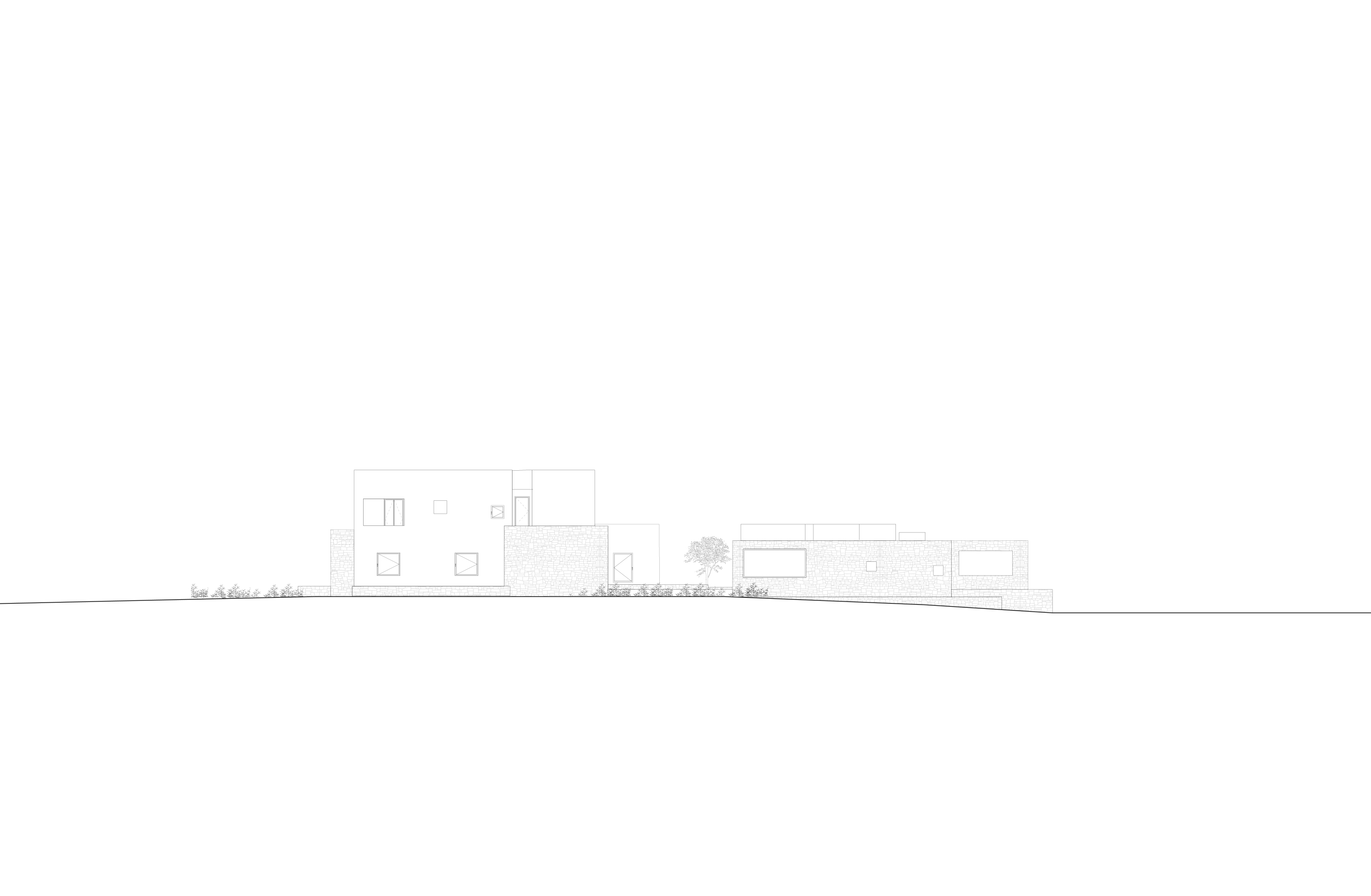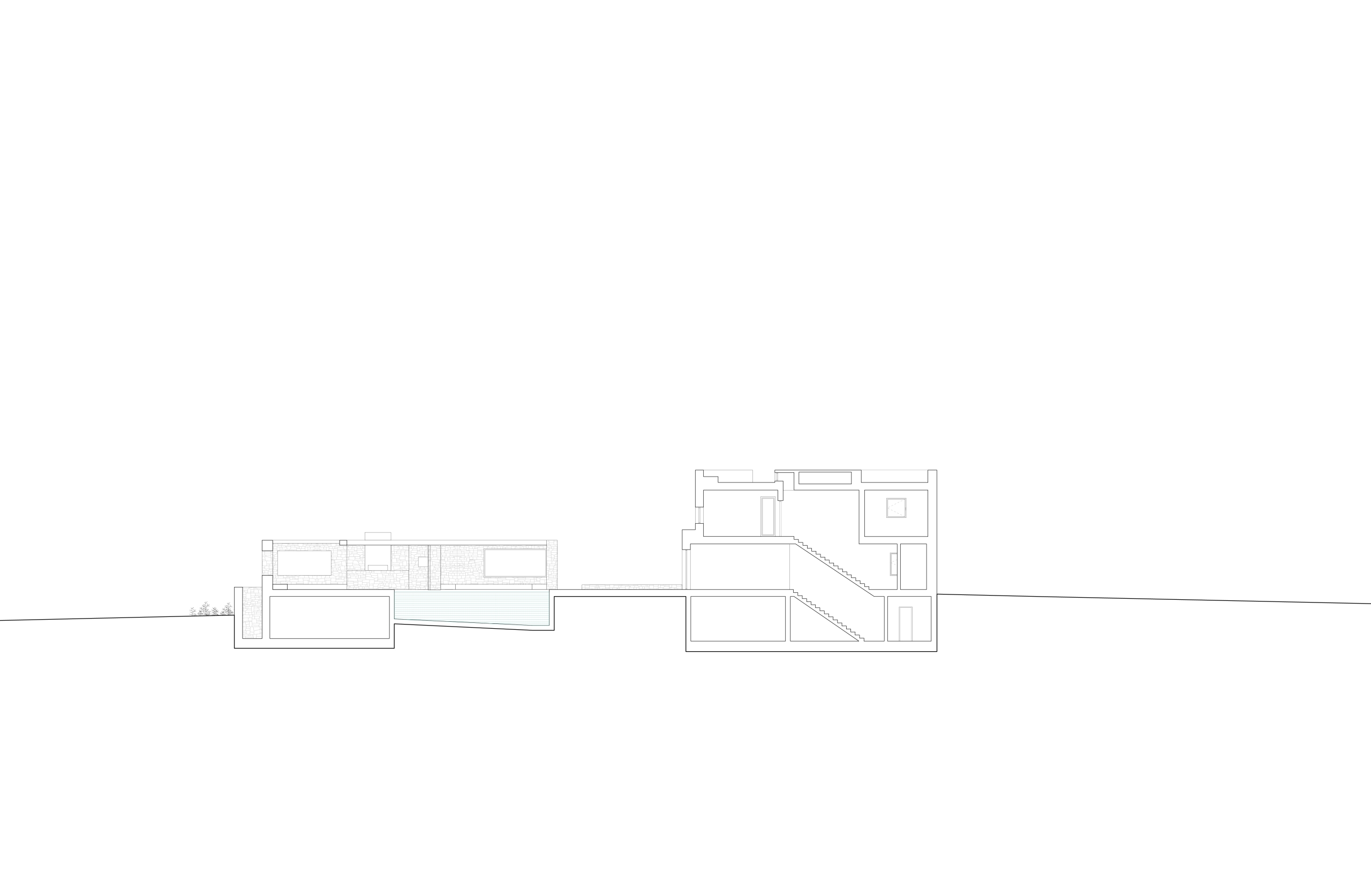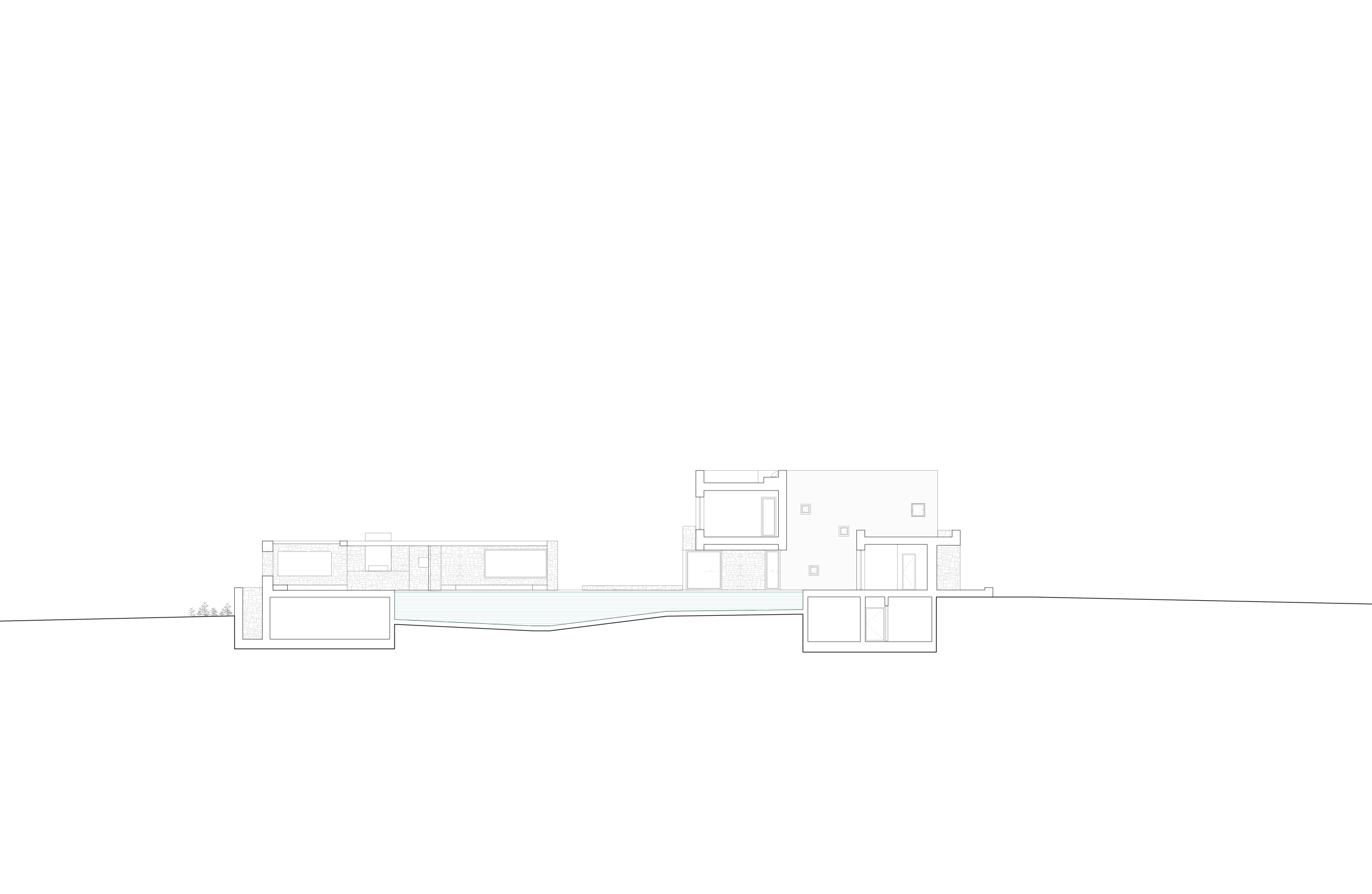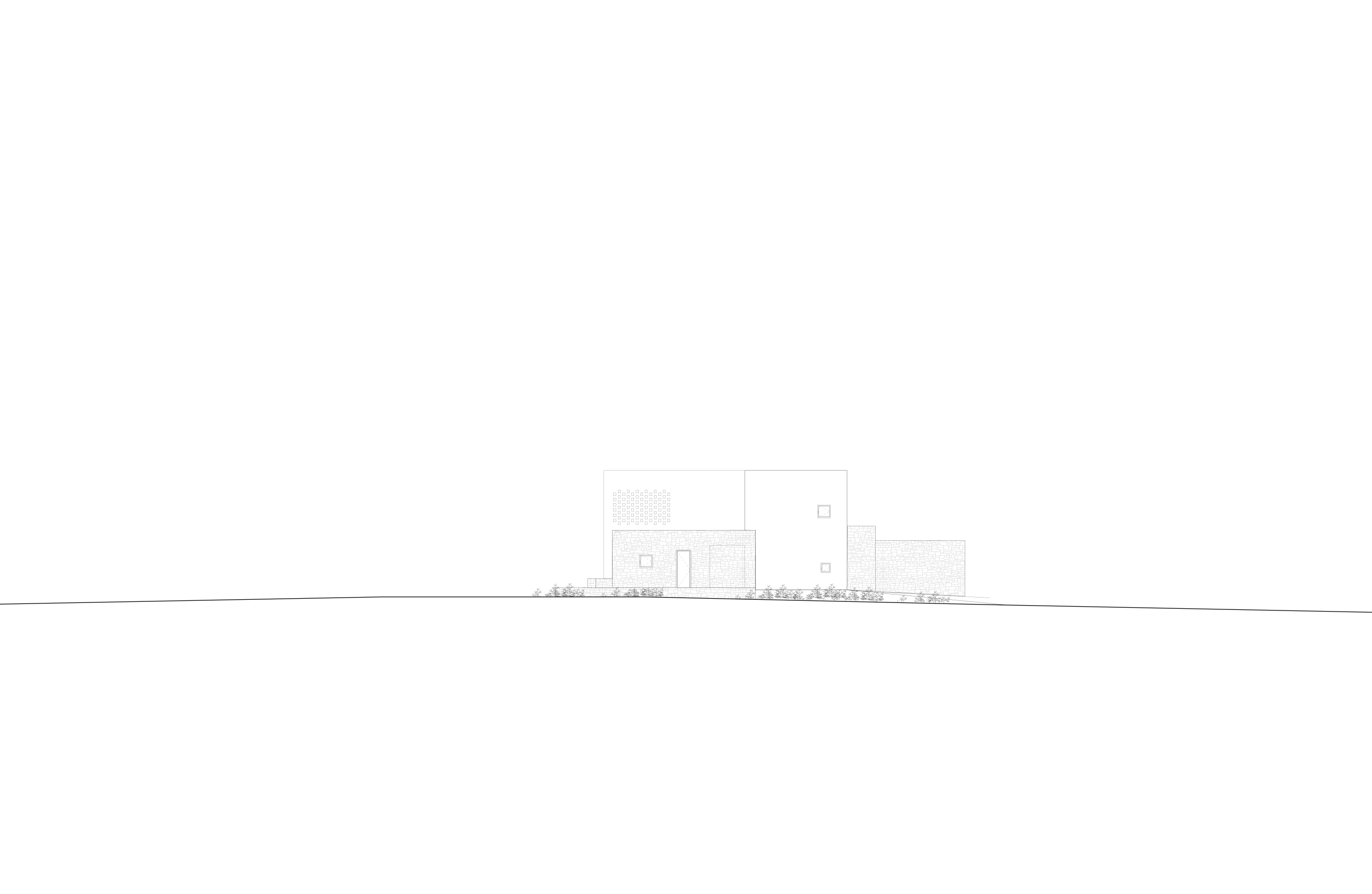An existing concrete structure serves as the starting point for this project—one of many that emerged in the Greek landscape due to a past regulation allowing property owners to extend building permits by constructing only the structural frame. As a result, unfinished concrete shells became a familiar sight, left standing for years. When we received the commission, this particular frame had been sitting idle in the landscape for over a decade.
Our decision to retain and adapt it was both strategic and sustainable, addressing key concerns of environmental impact, economic efficiency, and the constraints of local building regulations. Rather than imposing an entirely new form, we pursued a strategy of selective subtraction and precise addition, using basic geometric volumes to redefine the space.
We carefully removed only what was necessary from the existing structure and inserted L-shaped and rectangular volumes to establish formal and programmatic clarity. This approach not only resolved the challenges of the inherited framework but also introduced a replicable model for similar cases, offering a pragmatic yet refined architectural response that navigates both site constraints and regulatory complexities.
The plot itself is defined by its flat terrain and proximity to the port and village. With neighbors on all sides except the western edge—which is expected to remain undeveloped due to its protected forestry status—it lacks the extroversion of the typical seaside plot. The house is a delicate balance between introversion and openness. At the ground level, strategic placement of volumes around a central pool forms an inner courtyard, balancing unobstructed views and privacy where construction is either anticipated or has already taken place. This way, the house moves away from a conventional array of rooms and proposes a more communal concept of living with water as the focal point of daily life. On the upper floor, the living room and master suite overlook both the bustling port and the island’s northern wilderness, with a large window that allows the inhabitants to gaze at the port activity. An exterior staircase provides independent access to the master floor and roof, which offers unobstructed views. The house almost unassumingly emerges and nods to its surroundings with its simple geometry.
Passive strategies enhance sustainability: Cross-ventilation, efficient thermal insulation strategies, and a skylight at the top of the interior stairs transforms them into a cooling tower for the house. PV panels generate sufficient energy to sustain the house. Native flora minimize water use for irrigation and optimized pool depth ensures efficient water use, with a focus on reducing overall water consumption.
